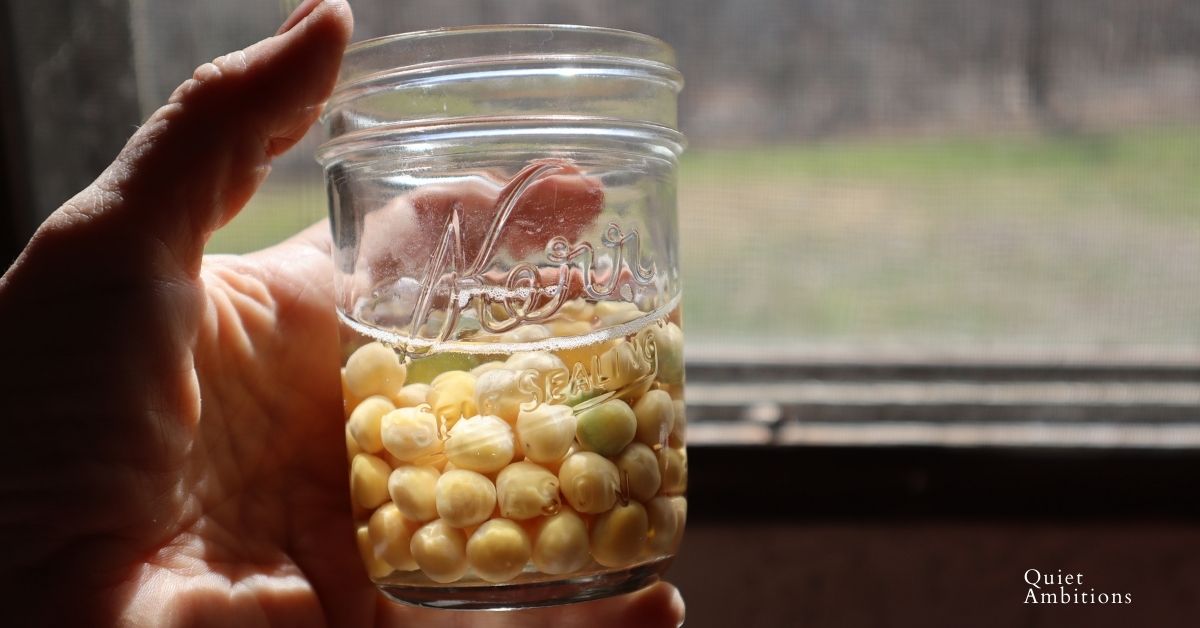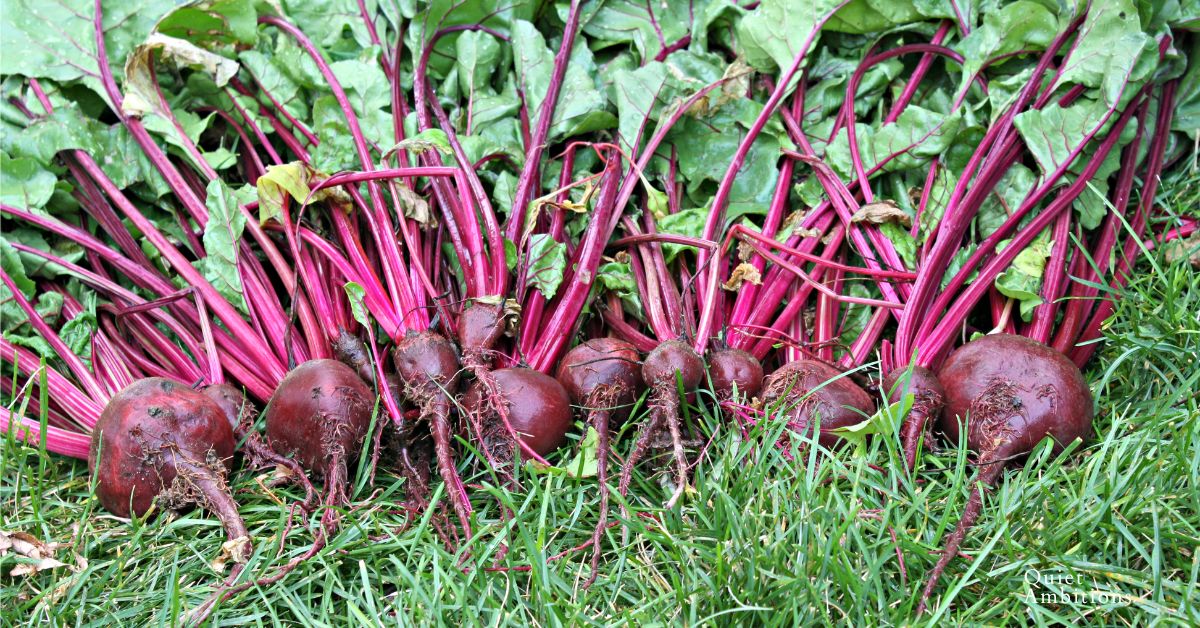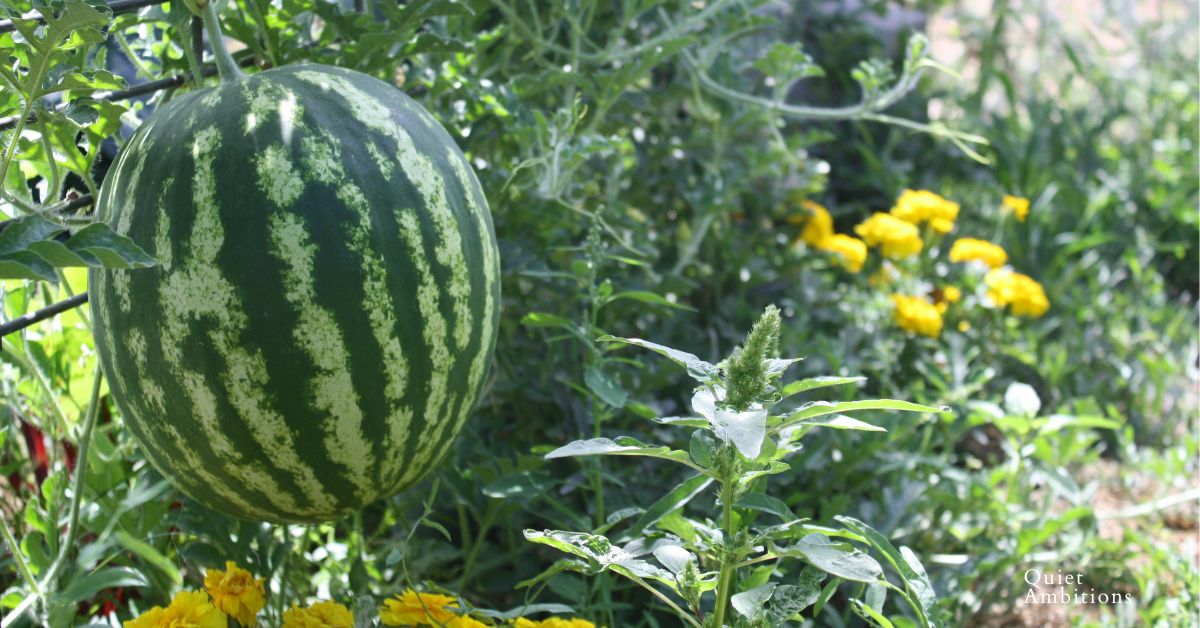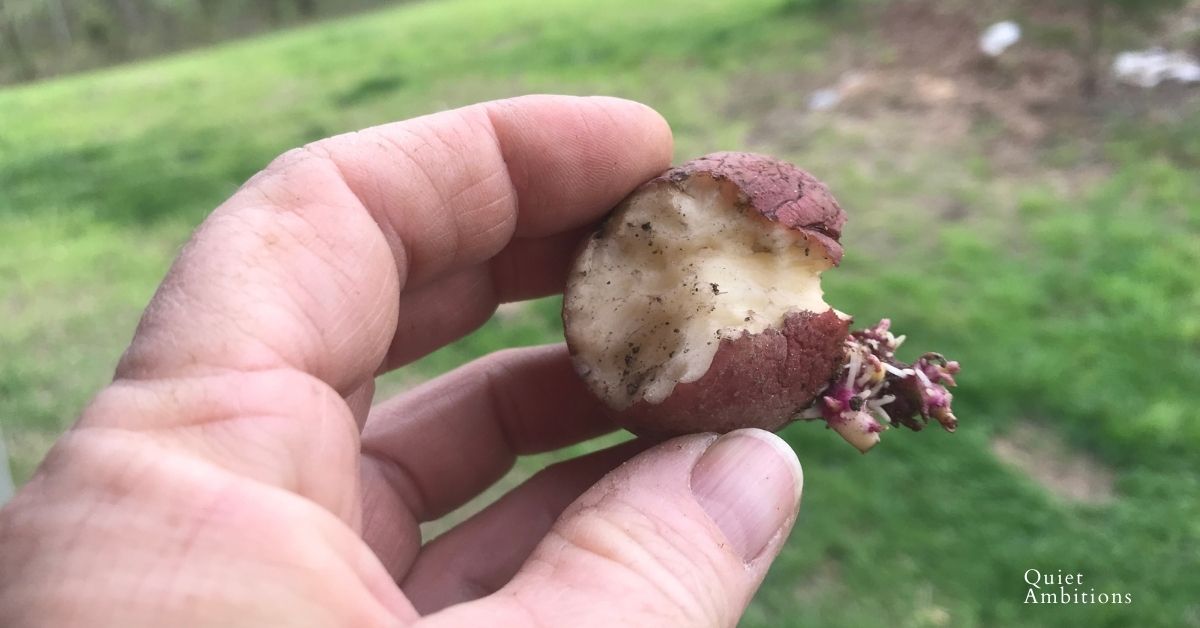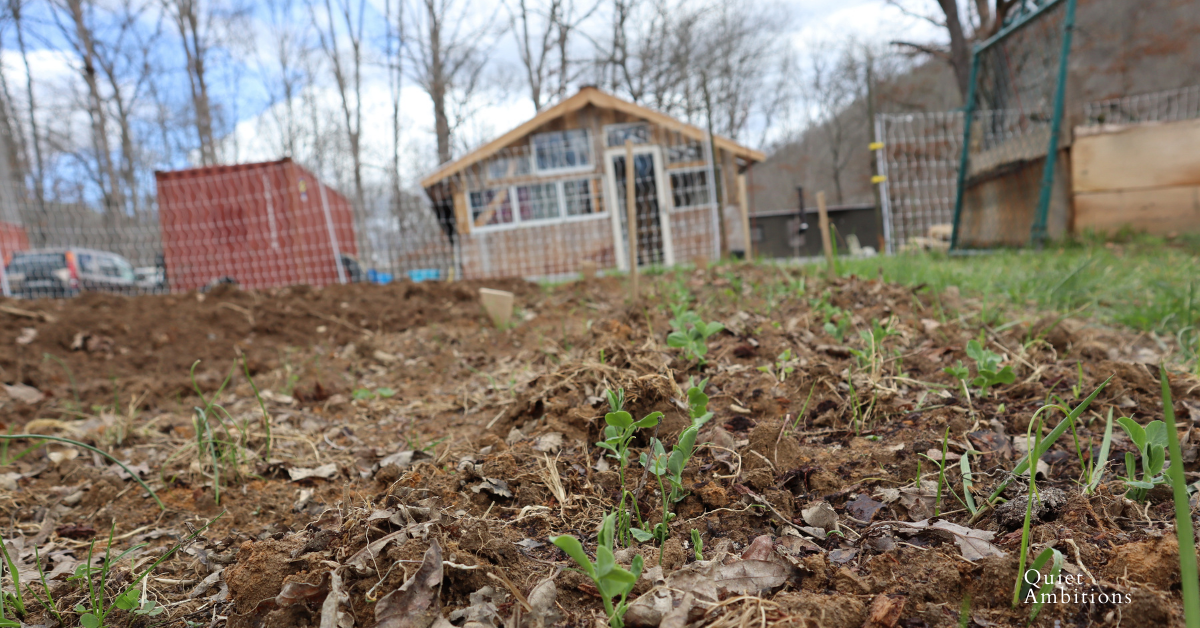How to Grow Radishes from Seed; Planting, Grow, Harvesting.
Learn how to grow radishes from seed. Thinning, companion planting, harvesting, pests and diseases, and basic garden needs of this quick growing crop. On this page I’ll go over how to grow radishes from seed to harvest and why it is a really great crop for any garden.
4 reasons to grow radishes in your garden.
- Fast growing food- the obvious is for your dinner table. Raw or cooked radishes are an easy fast crop for your menu.
- Pest repellant- companion plant to repel pests like cabbage worms.
- Trap crop – Radishes can also attract pests. Use this to your advantage to keep the pests away from other crops.
- Good for the soil – radishes will break up the soil and if left as a cover crop will break down and feed your soil.
Some crops that I grow in my garden (e.g., onions and peppers) require months to mature. They’re a practice in patience. 😉 But radishes? They grow very quickly, even in cooler weather, so they’re one of the first crops I plant every year.
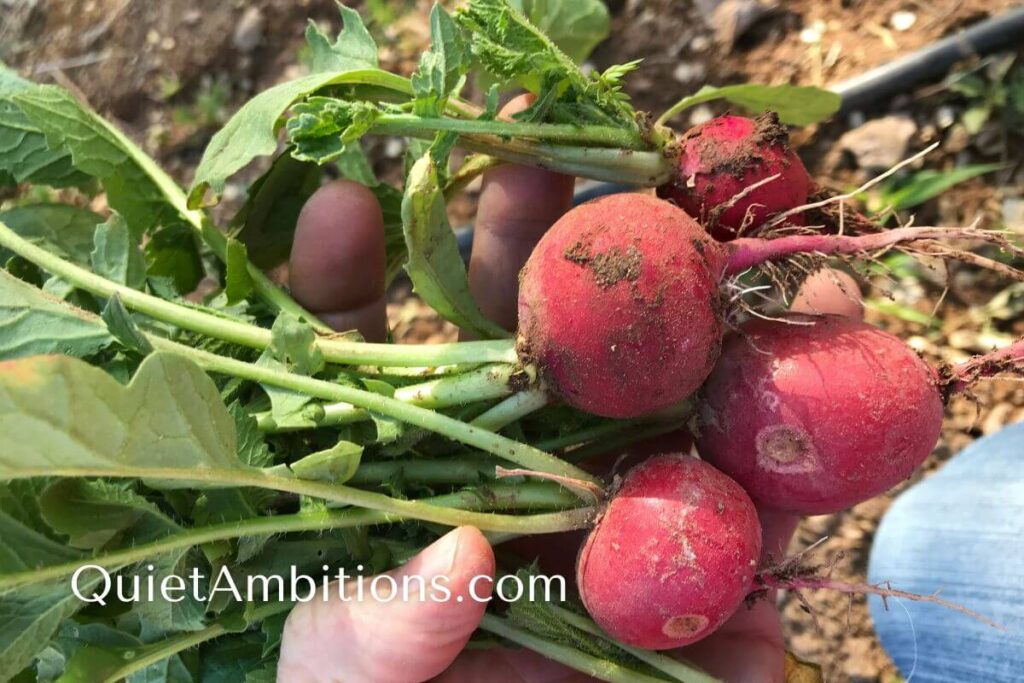
Nothing beats a crunchy, spicy, crisp radish pulled fresh from the garden. Eat raw on salads or add to a roast and eat them like potatoes.
2 Different Types of Radishes
While you might think of radishes as being red and round, there are actually several different varieties of radishes available, and they don’t all look alike either. I’ve seen white, pink, purple, and even black radishes in seed catalogs and online shops. Some are long and shaped more like icicles too, instead of the “traditional” round shapes.
Different varieties offer different perks—I’ve found that some varieties will mature more quickly than others, and not all of them taste quite the same either (especially when it comes to the level of spiciness). It’s entirely up to you!
Personally, my favorite radish varieties are a traditional round red radish. Traditional is the way we flow in this house.
The instructions on this page will work for growing basically any type of radish. Just be sure to adjust spacing between plants (it should be provided on the seed packet) and consider how long the radish will need to grow before you harvest it.
Growing Radishes Quick Tips:
- Suggested Soil Temp: Approx. 55 degrees to 85 degrees F
- When to Sow Indoors: NA
- When to Sow Outdoors: 4 to 6 weeks before Last Spring Frost or First Fall Frost
- When to Grow Radishes: Spring, Fall
- Seed Depth: 1/4″ to 1/2″ (small types) or 1” (large types).
- Days to Germination: 3 to 4 Days
- Spacing: 1” to 2” apart, in rows 12” apart
- Light Requirements: Full Sun
- Watering Requirements: Moderate, but consistent.
- Good Companions: Lettuce, nasturtium, pea, chervil, cucumber, onion, beet, mint, parsnip, spinach, squash, tomato, other crops.
- Bad Companions: Potato, hyssop.
Planting & Growing Radishes from Seed
When to Plant Radishes
Like I mentioned earlier, radishes prefer cooler growing temperatures, which means you can plant them directly in the garden about 4 to 6 weeks before your last frost in the spring or first frost in the fall. YES before your last frost is fine. Like I said radishes are one of the earliest crops to go in the garden.
Avoid planting in the hottest parts of the summer. You might as well wait a bit until the weather starts to cool down. Radishes shouldn’t be planted as a summertime crop—they don’t tolerate the hot weather nearly as well.
Resume planting in the fall as other heat loving crops are finishing up. Clean out the area and plant another batch of radishes.
Radishes can follow things like green beans or peppers or other crops that slow down as soon as the weather cools. It is likely radishes can tolerate early fall frosts and even light snow.
Succesion Planting
Radishes mature very quickly, so if you’d like a steady harvest of top-quality radishes, sow another round of seed every few weeks. Repeat as long as the weather remains cool.
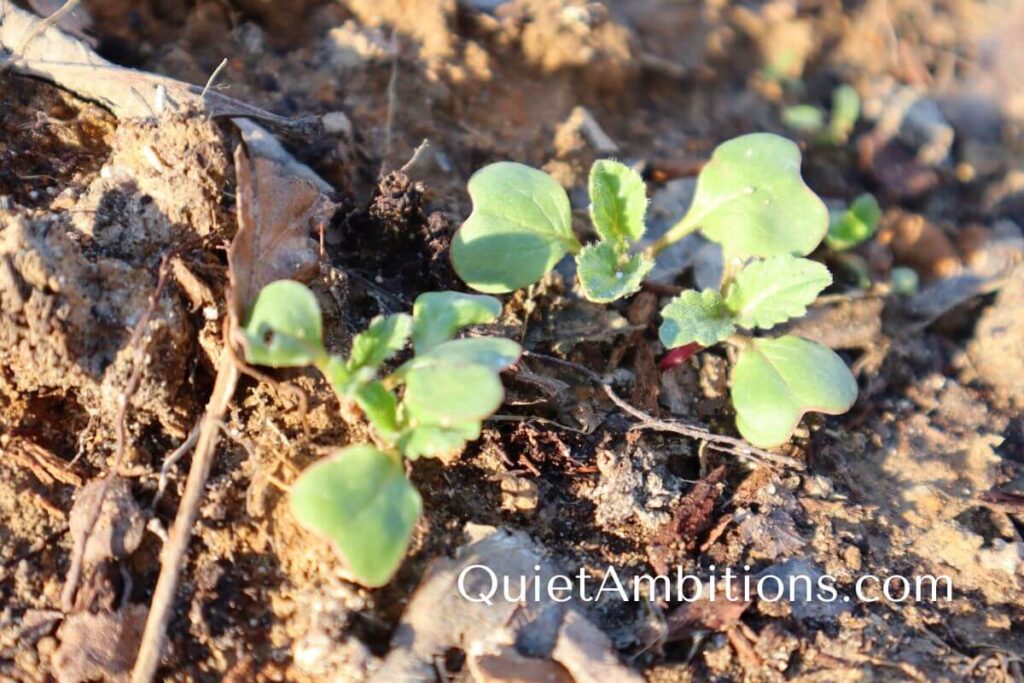
How to Plant Tiny Radish seeds
To plant radishes, sow directly in the garden soil, burying seeds 1/4″ to 1/2″ deep (for small radishes) or 1” deep (for large radishes). Space your radish seeds 1” to 2” apart, in rows 12” apart, to allow the radishes plenty of growing space.
Radish seeds are super small and can be tricky to spread evenly. I do this by just loosening the soil a bit, then run a stick or my hand down the row creating a shallow trench. Sprinkle the radish seeds down that trench and use your fingers to cover lightly. Water this row in well and keep it damp.
Only have old radish seed on hand? Don’t worry! Compared to some other vegetable seeds, radish seeds store quite well for longer periods of time. I’ve successfully grown radishes from old seed myself.
So go ahead and sow them, you’ll know quickly if they will germinate. It only takes 3 to 4 days to germinate. I’d wait 5 to days or so just to be sure.
After that, if nothing is coming up, you can quickly decide on another plan of action for that area of your garden.
Thinning Radishes
If you plant radish seeds too thickly in the rows, their roots will eventually crowd into each other as they grow. To prevent this, it’s a good idea to remove extra radishes when they’re young, thinning plants to about 2” apart or so (larger for big radishes).
Gently pull or snip the extra seedlings, but don’t throw them away! They’re tasty in salads. In fact, I like to wait until I’ve got small radishes then pull every other one. This leaves some space for the radish plants you leave to continue to grow and gives you some tasty radishes to slice up for the kitchen.
Radishes Companion Planting Tips
Radishes are sometimes planted alongside other crops because they grow so quickly. They’re sometimes used as edible row markers that break the soil for slower growing vegetables like carrots, which take longer to germinate and don’t tolerate heavy soil conditions.
Radishes are especially good to plant near lettuce, nasturtiums, peas, cucumbers, onions, beets, mints, parsnips, spinach, squash, and tomatoes, among other crops.
I like to plant radish and carrot seeds together. The radishes come up in just a few days, the carrots can take 10 days to 2 weeks! The radishes do a nice job of marking my row where I’ve planted the carrots. They also help keep the soil loose and broken up. Carrots seeds don’t like a crust on the soil.
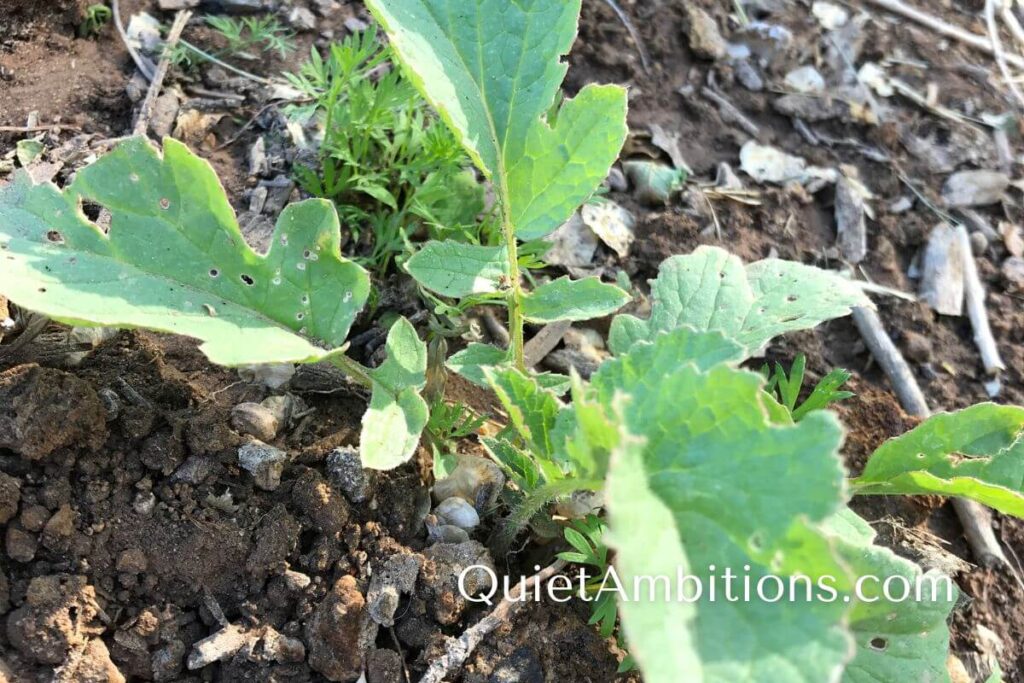
There are some crops that shouldn’t be planted next to radishes too. Don’t plant potatoes or hyssop near radishes in the garden—they’re considered antagonistic crops for radishes.
I recently learned that radishes repel cucumber beetles. I struggled mightily with beetles last year so you can bet that planting radishes along with my cucumbers is in the garden plan this year!
In addition, radishes are sometimes used a trap crop for pesky insects. In case you’re unfamiliar with the term, a trap crop is simply a plant that draws pests away from another crop in the garden, sometimes at the expense of the trap crop. Radishes attract flea beetles and cabbage moths. So plant some radishes a little away from those crops and the insects will go for the crop they like best.
Growing Radishes Indoors
While I’ve never tried it, I suppose you could grow radishes indoors as well, in containers filled with potting soil. The main concerns with indoor growing would be A.) making sure your container is deep enough for the roots to grow properly and B.) making sure your seedlings receive enough light indoors.
Radishes are so simple to grow outdoors, however, so I wouldn’t really suggest growing them indoors.
Can You Grow Radishes in Containers?/ How to Grow Radishes in Pots
You can also grow radishes in containers and pots filled with a rich potting soil. Container gardening is ideal when you lack in-ground garden bed space or your soil is particularly low quality.
Like with indoor growing, make sure your pots are deep and wide enough to accommodate the radish roots as they grow. You’ll also need to make sure your containers receive enough sun throughout the day, instead of being shaded by, say, the house or something else in your yard.
Soil in containers dries out more quickly than in-ground garden plots too, especially under strong sunlight or windy conditions, so you’ll also need to make sure and keep the pots moist as the radishes grow. I did a video comparison of pots or 5 gallon buckets compared to the fabric grow bags on our youtube channel. Both work fine but I do have a preference and the moisture levels made a big difference.
Fertilizing Radishes
Like other garden crops, radishes may be fed with some fertilizer or aged compost, but I usually don’t provide much else after they’re planted. If you do choose to fertilize, one thing to keep in mind is to avoid providing too much nitrogen in the fertilizer—nitrogen can encourage leafy green production over root growth, which isn’t what you want when growing radishes as a crop. If you are just going for the trap crop concept it probably doesn’t matter as much.
Radish Growing Requirements
Soil Conditions
Radishes love well-draining, loose soil. In other words, the soil should allow any excess water to drain away from the roots so they don’t drown! Loose soil is best for growing root crops in general, actually.
Temperature Conditions
Can radishes survive frosts? Yes, radishes tolerate frost, especially in the spring. If it’s going to be a very heavy frost/freeze, think temperatures into the 20s, you might want to cover them using something like garden row cover fabric, just in case. But I’ve been surprised by what radish plants can tolerate.
In hot weather, however, the roots will usually become tough and develop a strong flavor, making them far less enjoyable to eat. If left unharvested, the plants will eventually bolt (i.e., flower and then produce seed pods), officially marking the end of the radish harvest. (save those seeds for your next crop!)
Water Needs for Radishes
Like many root crops, radishes need consistent, regular water, amounting to somewhere around 1” of rain per week. The exact amount of water required does depend somewhat on your soil type and how well it retains moisture, so keep that in mind, as well as the general weather conditions.
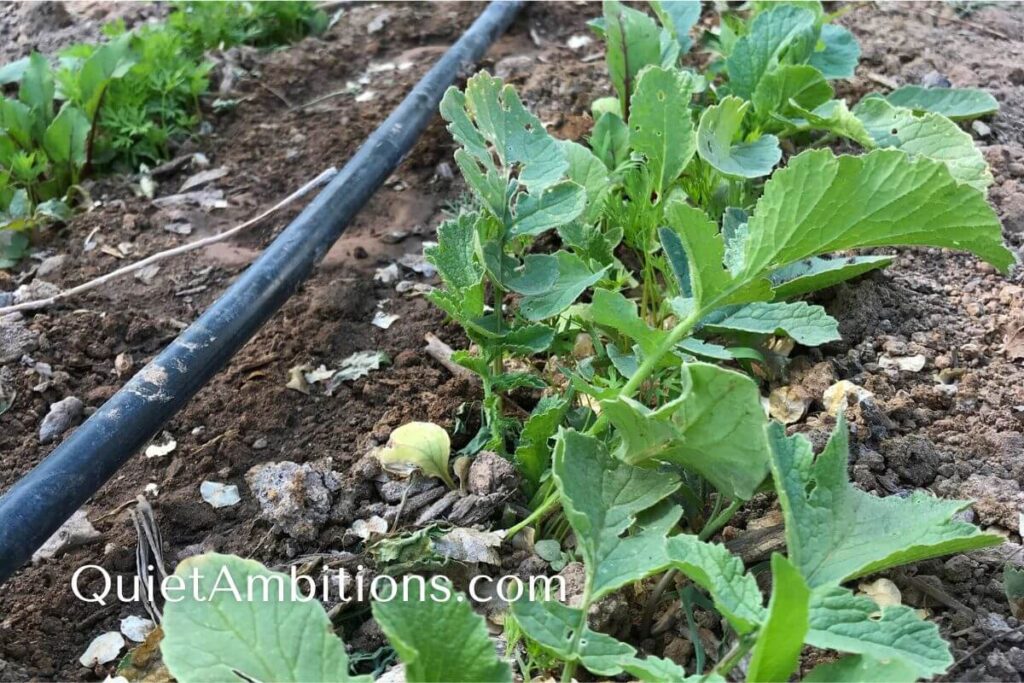
Excessive water will cause radishes to split. It has happened to me plenty of times during the rainy season here in E Tennessee. Radishes will need more water in hot weather, especially if they are in full sun. If they are interplanted at the base of taller plants, they’ll be shaded and not need as much.
Light Needs
Radishes prefer full sun in the garden, especially considering the cooler temperatures found in the spring and fall when they’re usually grown. They will tolerate partial shade too, however. Keep that in mind for interplanting. They can go under taller plants as long as they do get some sun.
Growing Radishes as a Cover Crop.
Radishes can make a great cover crop. If you are not familiar with cover crops it is something that is planted not for the harvest… but mainly for the benefits to the soil. Radishes (especially some larger, longer varieties) grow into the soil breaking things up. If you leave the radish in the ground it will rot, feeding the soil and benefitting future crops. It will also leave gaps where the roots were increasing air in the soil and reducing soil compaction.
Radish is also great for a forage crop. I’ve planted radishes in the late summer at the end of the garden season. After it comes up I’ll let my poultry (chickens, guineas, ducks) in the plot to graze on the tops. This adds extra nutrition to the chickens diet and leaves the roots in the ground to benefit the soil. The chickens WILL eat the roots too after the tops are mostly gone. I like to leave them long enough to get the greens but leave the bulbs.
Growing Radishes Problems
Why are My Radishes Splitting?
Sometimes, you pull a pretty looking radish from your garden, only to realize it has split down the side or middle of the root, leaving the interior flesh exposed to the dirt. Bummer.
What causes splitting in radishes? Usually, it has to do with a drastic change in the amount of water the plant receives, such as what occurs with heavy spring flooding. Do what you can to keep the water consistent. But sometimes natural rainfall just happens.
Common Pests & Diseases for Radishes
Radishes are fairly pest-free crop in the garden, though they can be susceptible to certain pests like cabbage root maggots, cabbage worms, and flea beetles. This is fine and an expected issue if you are using radishes as a trap crop. But what if you want a good harvest? You can do some things to minimize pests.
Mixing some wood ashes in the soil is said to help prevent cabbage root maggots, while covering the plants with row covers early in the season is also said to protect plants against flea beetles, cabbage root maggots, and cabbage worms.
Harvesting Radishes
Harvesting radishes is as easy as grasping the stems close to the bulb and gently pulling out of the soil.
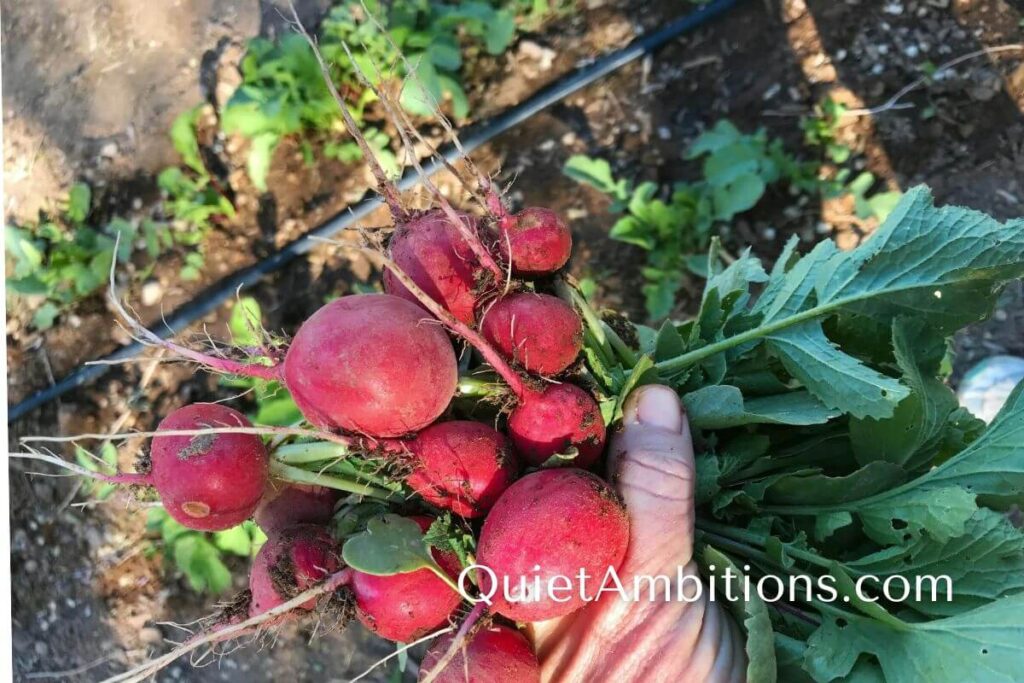
You can start harvesting radishes as soon as the roots become large enough to eat (which depends on the variety and your personal preference). They will likely be around the size of a golf ball, or maybe a little smaller even. Some varieties will get much larger but they won’t keep in the soil long once they’re at their prime. They can quickly becoming overgrown and woody, so you don’t want to wait too long. Pull a few radishes and try them if you aren’t sure!
When they’re ready to harvest, gently pull the radishes from the soil, or dig them if they’re especially large varieties like daikon radishes that might snap off if you try to pull them.
How to Store Fresh Radishes
Cut off the radish tops and store fresh radishes in the fridge for up to 14 days or so. The sooner they’re used, the better.
How to Make Pickled Radishes?
While radishes aren’t used for canning, you CAN make them into refrigerator pickles. Refrigerator pickles are made by placing radishes into a jar of brine, and then storing the jar in the refrigerator for a period of time to allow the flavor to infuse into the radishes. It is more about flavor than long-term food preservation.
Radishes are also great for lacto-fermentation (i.e., pickling in a saltwater brine on the counter)! You can learn how to make fermented radishes here: https://www.culturesforhealth.com/learn/recipe/lacto-fermentation-recipes/lacto-fermented-radishes/
How to Freeze Radishes
Freezing radishes is possible for future use as well.
- Simply slice off the root and stems.
- Wash the radish well because it is a root crop and you want all the dirt off. A veggie brush helps.
- Blanch for 3 minutes or so depending on the size of your radishes. You want the radish to be lightly cooked. It will look cooked but will still have a bit of crunch.
- Drain well and freeze in freezer containers. Freezer bags is my preference.
Radish FAQs
There are SO many different ways to use radishes, as a fresh veggie and salad ingredient. Some people even use radishes as a lower carb potato substitute. My favorite ways to use are to simply slice thin and snack on them. Or add it to a salad. I also love plunking whole radishes in with our roasts. I’ll cook both potatoes for my husband and whole radishes for me.
There are SO many different ways to use radishes, as a fresh veggie and salad ingredient. Some people even use radishes as a lower carb potato substitute. My favorite ways to use are to simply slice thin and snack on them. Or add it to a salad. I also love plunking whole radishes in with our roasts. I’ll cook both potatoes for my husband and whole radishes for me.
Radishes and turnips are two different types of root crops. Though they’re both in the same family, radishes are smaller and provide a slightly spicy flavor. Turnips are larger, closer to the size of, say, an onion bulb. Turnip flesh is firmer and not necessarily spicy like radishes, but more sweet and hearty. Turnips is another you either love it or hate it category. I love turnips. 😊
Yes! As I indicated above radishes are sometimes used as low-carb potato substitutes. I love to cook them with a crockpot roast. Although I don’t add mine to roasted veggies they would be a great addition. Simply chop root crops of your choice (turnips, potatoes, radishes, parsnips are options) into bite size pieces. Toss with some olive oil. Add salt and pepper to taste and roast in the oven. Yummy.
Radish leaves, like the leaves of many other root crops, are indeed edible. They’re best eaten when quite young, before they become rougher with age. They’re most commonly used in salads, or for making things like pesto and sauteed greens. Give them a try!
You don’t have to peel radishes unless you want to. Larger radishes and/or radishes with tougher skins would benefit from peeling, but other radishes should be tasty with the skins. I don’t remember ever peeling a radish.
Growing Radishes
Growing radishes is so easy I really recommend any gardener add them to the plan. Whether this is your first year garden or you’ve been gardening for ages but just never tried radishes. It’s a really good crop to include.

